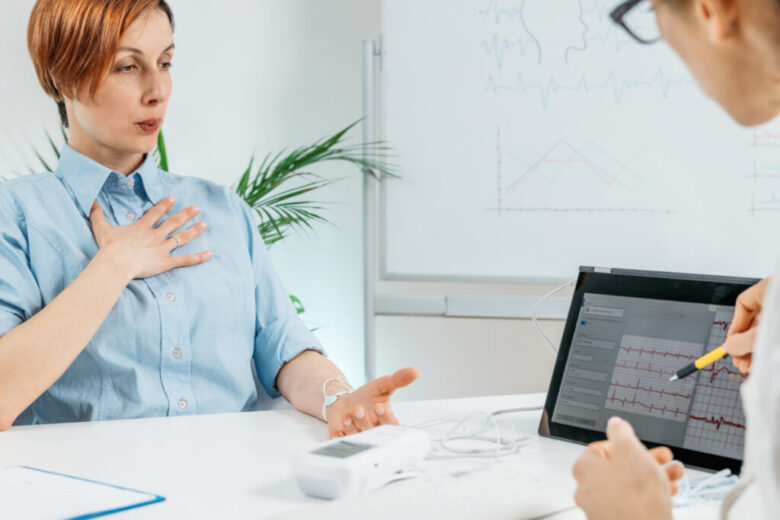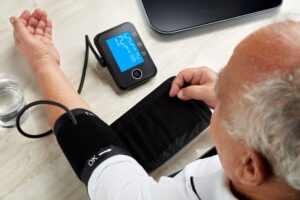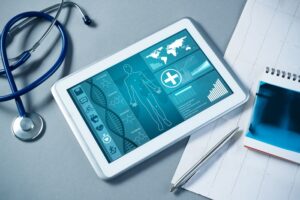Biofeedback technology allows people to monitor and control several physiological processes in the body that are normally involuntary. These include brainwave activity, muscle tension, skin temperature, and heart rate. Users of devices with real-time feedback technology can see how their body responds to different thoughts, emotions, and environments. This technology can guide people to make subtle physical adjustments to improve their health. For example, learning how to relax specific muscles or lower their heart rate can help people more effectively reduce pain, anxiety, and tension.
Making the Invisible Visible, Reactions
One of the most powerful features of biofeedback technology is its ability to clearly display invisible physiological functions. Most people are unaware of their heart rate patterns or how their muscles tense under stress. Biofeedback devices shorten this period by displaying this information via visual or auditory signals. Users of this real-time data can begin to see the connection between their physical health and their mental or emotional health. This direct feedback provides a clear path to learning how to control their internal state and helping people become more aware of it.
Understanding Stress and Relaxation
Stress is one of the most common factors in modern health conditions. Biofeedback technology can help people understand how stress affects the body. Heart rate variability is a key indicator of how effectively the body is coping with stress, and the device records this. When users see how stress causes muscles to tense or their heart rate to increase, they begin to pay more attention to their responses. The path to improvement begins with this awareness. The reviews also allow people to practice guided visualization or deep breathing, two relaxation strategies, and see directly how they calm the body.
Improve Mental Health Through Self-Regulation
Biofeedback is not only closely linked to physical health but also has a huge impact on mental health. Biofeedback can help people with PTSD, anxiety, or depression learn to control their nervous system. People learn to control their mental health by observing their body’s responses and using different methods to regulate their mind and body. This technique can improve emotional stability and help people feel less helpless. Regular, long-term practice can lead to lasting resilience and mood swings, allowing users to tackle challenges with greater calm and confidence.
Biofeedback for Physical Rehabilitation and Pain Management
Many people choose biofeedback for physical rehabilitation and ongoing pain relief. These devices can guide users through activities to reduce stress and help identify which muscles are tight. Conditions such as back pain, migraines, and tension headaches are particularly beneficial. Biofeedback supports patients’ recovery by helping them perform exercises correctly and strengthen muscle function. This technology gives patients recovering from surgery or injury a clear picture of their physical development and keeps them motivated. Real-time images and influences can significantly improve and accelerate the recovery process.
Improve Sleep Quality with Biofeedback Devices
Sleep problems are common and have a giant impact on your health. Biofeedback devices can monitor sleep patterns and highlight interruptions due to stress or irregular breathing. With this information, users can focus on ways to calm their body and mind before resting. Some devices include guided breathing sessions or relaxation techniques that help the body prepare for sleep. Regular biofeedback can help people better understand the factors that affect their sleep and adjust their bedtime routine. Better sleep can contribute to better mental clarity, a stronger immune system, and higher energy levels.
The Role of Wearables in Everyday Biofeedback
Wearables are making biofeedback more accessible than ever. Fitness trackers, rings, and smartwatches can track vital metrics like heart rate, temperature, and movement throughout the day. The feedback these devices provide can help consumers make smarter decisions right away. For example, if a wearable detects elevated stress levels, it can advise the user to take a deep breath or take a walk. Over time, these subtle changes can significantly improve well-being. The wearability and ease of use of wearables are making biofeedback a regular part of everyday life, revolutionizing health monitoring.
Biofeedback for Kids and Teens
Biofeedback is not only useful for adults but also for kids and teens. Young adults often struggle to express their feelings and understand how stress affects their bodies. Biofeedback is an exciting and interactive way to learn self-regulation. Games and apps for young users make learning about their bodies fun and engaging. Early education helps foster better coping mechanisms, emotional intelligence, and resilience and promotes development. Parents and teachers can also use biofeedback tools to help children address attention deficits, anxiety, or behavioral issues, laying the foundation for lifelong health.
Conclusion
Biofeedback technology represents a major advancement in personal health and wellness. By seeing what’s happening in the body in real time, people can take control of their physical and mental health. Biofeedback offers various benefits, from reducing stress and pain to improving sleep and increasing mental clarity. It promotes learning through repetition, helps develop better behaviors, and supports professional treatment when needed. The growing popularity of wearable devices and user-friendly technology makes biofeedback an accessible and effective way for people of all ages to understand and improve their health.
FAQs
1. Define biofeedback and explain how it works.
Biofeedback uses electronic devices to provide real-time information about body processes so people can learn how to control and improve them.
2. Is biofeedback safe for everyone?
Biofeedback therapy is generally safe and noninvasive. It can be adapted for adults, children, and the elderly and is used to treat a wide range of conditions.
3. How long does it take for the effects of biofeedback therapy to become visible?
Although results vary, many people notice changes after a few weeks of regular practice. Long-term use generally produces longer-lasting results.
4. Can biofeedback relieve stress and anxiety?
In fact, biofeedback is particularly effective at helping people recognize and reduce stress and anxiety by teaching them to control their physiological responses.
5. Does a therapist need to accompany biofeedback?
Although expert guidance can enhance the experience, many modern biofeedback devices and apps are designed for consumers and can produce excellent results when used individually.




